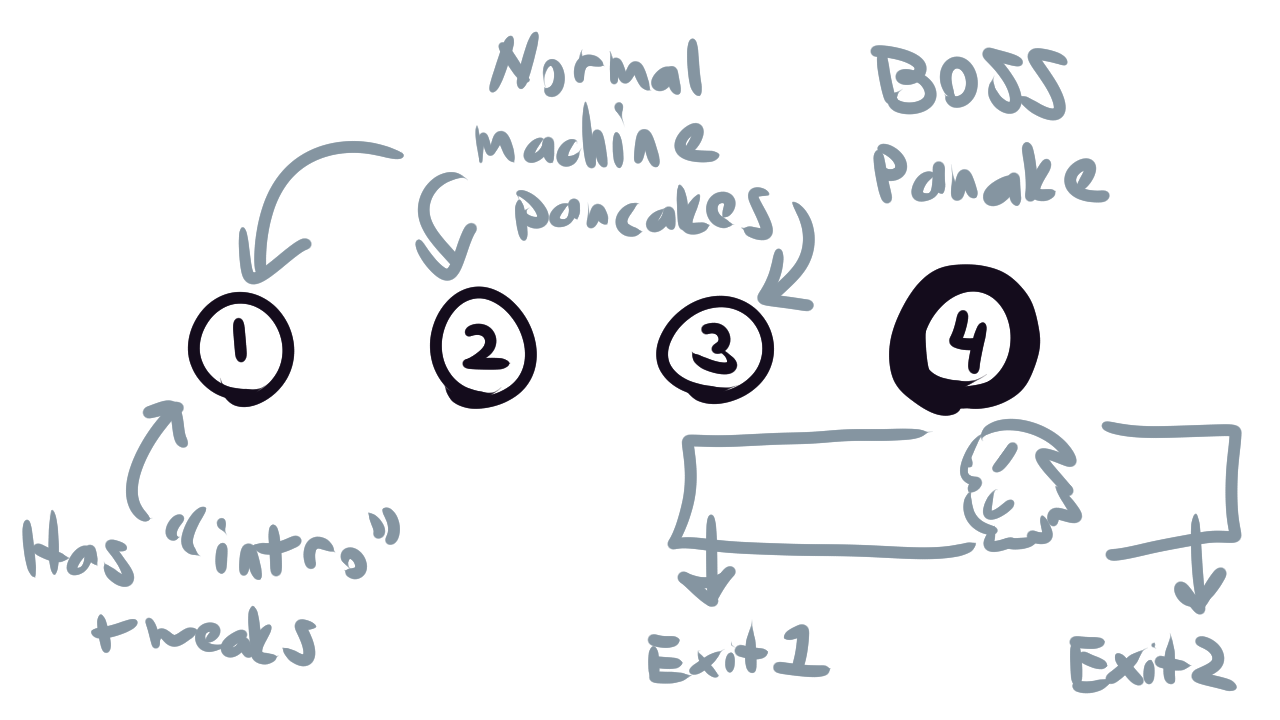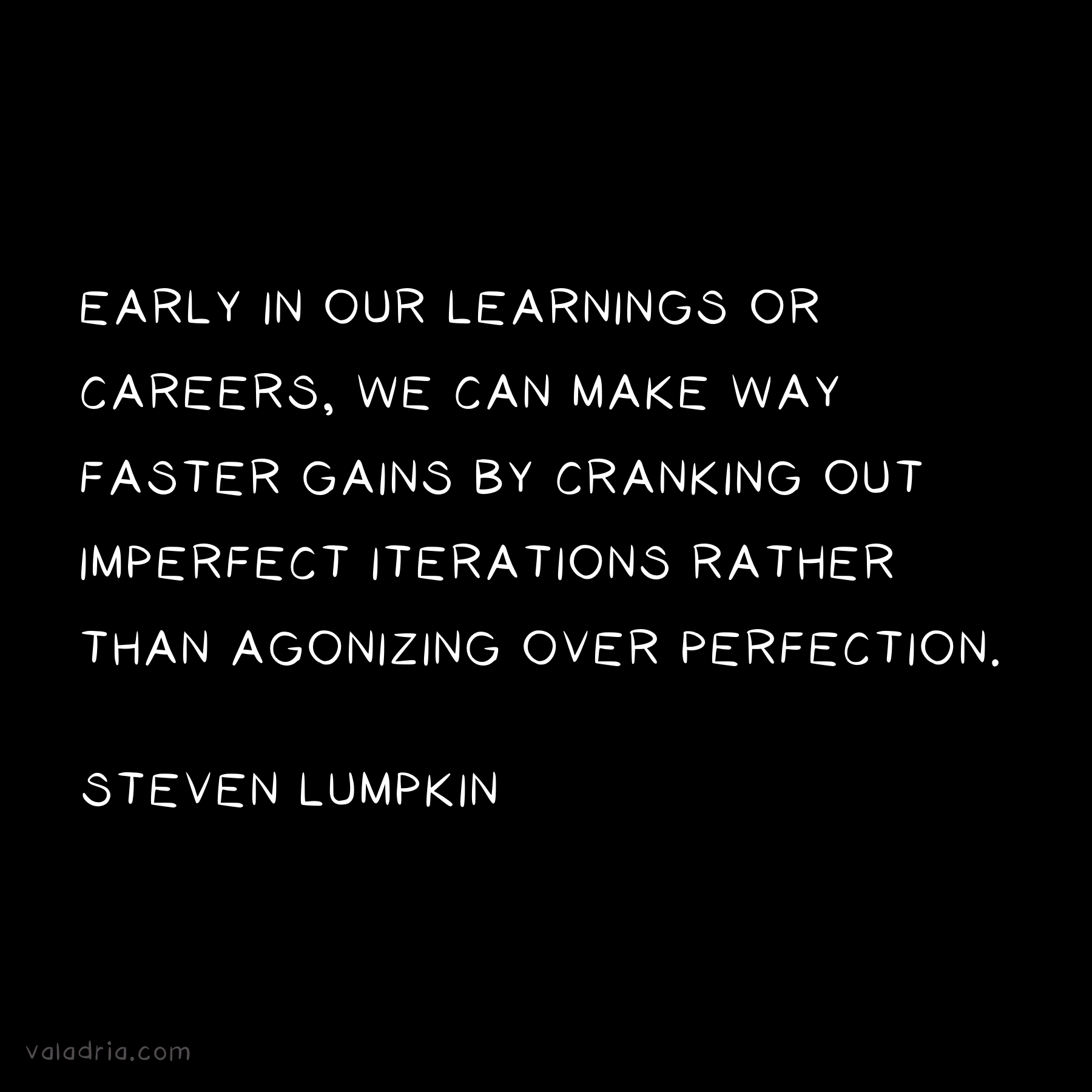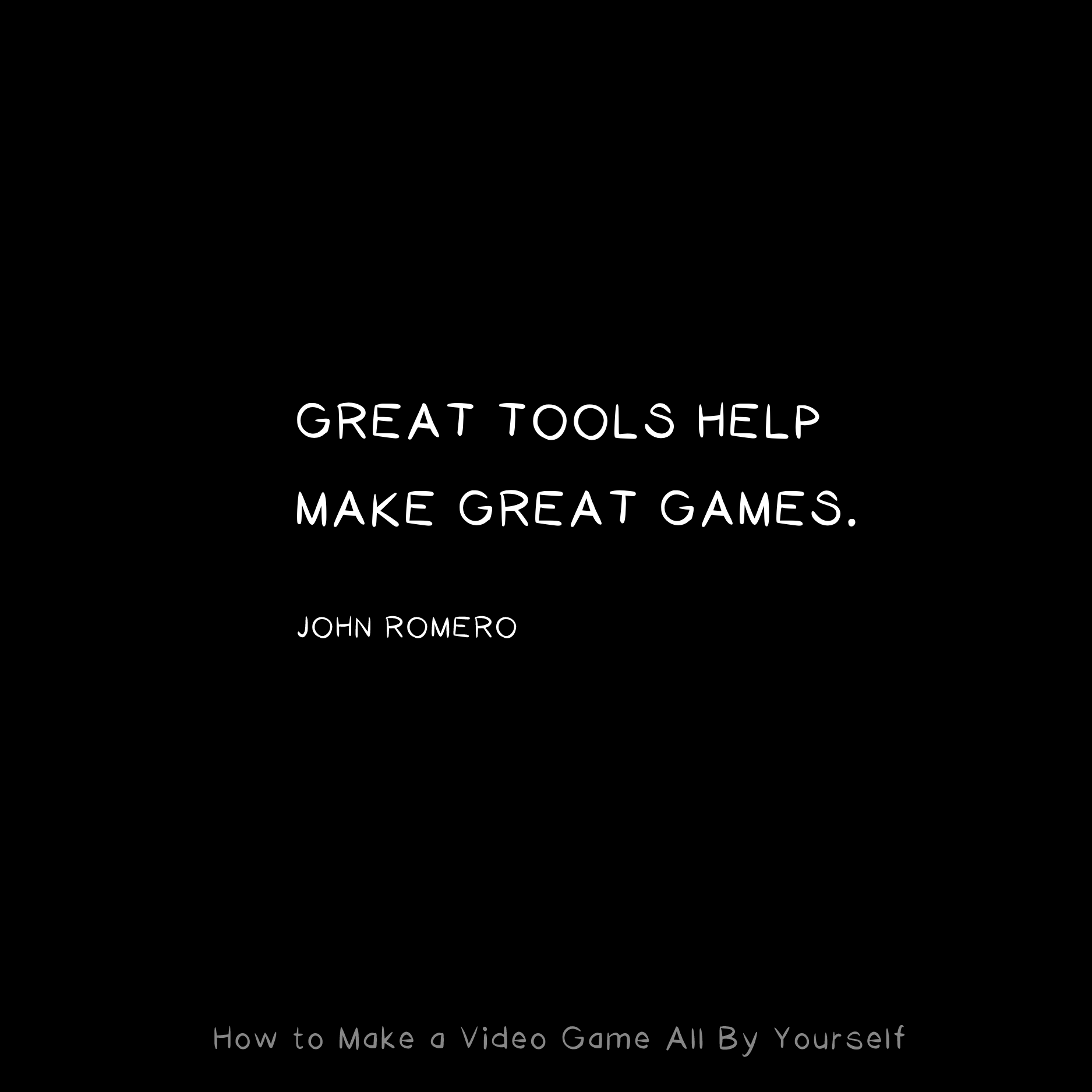|
Pancakes can give you insight on how to get really good at making things. Things like art, music, games, and everything between. Let's talk about what us creative folks can learn from a delicious stack of pancakes. We're going to learn a lot from pancakes today as we discuss these 5 topics: - Pancakes as creative works
- Why pancakes?
- How I make pancakes
- Iteration is key
- A tight feedback loop
Also stick around to the end where we'll answer this listener question about making a pancake machine: I've been thinking a lot about something you and Geoff talked about in the past, which is the idea of:
Don't make a pancake machine before you know how to make a pancake.
And let's say you know how to make both? When's the right time to make a pancake and when's the right time to make a pancake machine? Thanks for the question Chris! It's taken me a while to answer because I'm answering in the form of a $1700 three-day online course called – PAYING MATT'S BILLS – just kidding! That's a Making Big Indie Games joke!! I couldn't help myself. About 14 people get that joke. Pancakes as creative worksI love analogies. We're going to be talking about literal, delicious pancakes, but when thinking about a pancake, you could also be thinking about: - A level in your video game
- A paragraph in your article
- A chapter in your book
- A scene in your movie
- A section in your song
Think of a pancake as a "chunk" of content you're making. Now that we have the analogy down, let's talk about pancakes themselves. Why pancakes?There are thousands of foods that might be appropriate for this analogy. Burgers could maybe work, but pancakes have at least 7 relevant qualities: - They're inexpensive
- The ingredients are accessible (easy to get ... except eggs sometimes I guess)
- They're simple to cook
- They're a blank canvas to which you can apply your own flavors
- They can easily be vegan & allergy-friendly
- They are circular (a perfect shape)
- They scale easily (you can have a single pancake or a huge stack)
How I make pancakesMy actual pancake recipe was sent only to the Make the Game newsletter subscribers. But I feel like you know how to make pancakes, or can Google it or whatever. For that reason I'll skip straight to my personal tips: - Before you start cooking, move the butter & syrup from the fridge so it can warm up while you cook
- Don't overmix the batter so your pancakes retain airiness
- Before cooking a batch, test your process with a silver dollar pancake
- Resist the urge to press down on the pancakes with your spatula
- When cooking a large batch, stack pancakes on a plate under a kitchen towel (note that this will soften any crisp you attained, if that matters to you)
- Heat the syrup before serving (I use the microwave, heat for like 20 seconds)
💡 Each of these tips came from having made a bunch of pancakes. What tips have you picked up while making games? In addition to making them, there are so many other ways to get pancakes: - Buy a premade mix at a grocery store
- Buy pancakes at a diner
- Hire a private chef??
Let's do a quick analogy! How would these options compare to, say, creating a 2D sprite for a video game? - Buy a premade mix = buy a bundle of assets from Humble bundle etc.
- Buy pancakes at a diner = buy a package of assets directly from an artist
- Hire a private chef = hire a 2D artist to create custom sprites for your game
But what do we learn about by making the pancakes ourselves? Two critical things: iteration & a tight feedback loop for for excellent pancakes. Iteration is keyA reliable way to get better at something is to do it over and over again. With pancakes, iteration is baked directly into the act of making them. You never make just one pancake, right? Iteration is one of the most critical elements of making good things. With pancakes, it's right there in the process: you're making a dozen or so pancakes with each batch. The more we're able to iterate, the more we're able to improve our skills. When we make a dozen pancakes, you can almost guarantee the final pancake is going to be better than the first. Pancakes don't need to be perfect. We developers tend to obsess over our games, reaching for some unattainable version of perfect. The fact that we may never get a perfectly round pancake can help us accept that we'll never make a perfect game. A tight feedback loopWhen making games, there are often long delays between ideation, experience, and feedback. The devs come up with an idea, then there's a lengthy delay while they make it, then they test it with actual players, who give them feedback. This could look like these 5 steps: - Ideation happens – let's add a dragon to our game
- Development – create, add, and tweak the dragon
- Playtest – make a build, gather players, and run playtest(s)
- Feedback – what did the players think of the dragon?
- Iteration – make changes to the dragon based on the feedback
How long does one iteration cycle take you? The above could take days or weeks. When making pancakes, you can complete the entire process super fast: ideation, creation, testing, feedback, and iteration. To prepare, make, & taste pancakes takes, what, 15 minutes? You mix your batter in just a few minutes. You can cook a small tester pancake rapidly. Spread a little butter on it, pour a tiny amount of syrup on it, and your adorable silver dollar pancake tells you everything you need to know. Was the batter made correctly? Does it taste right? Did it rise enough? Was it undercooked, overcooked, or just right? This small tester pancake can help save us from mistakes. If we forgot to add sugar, or made the skillet too hot, the tester pancake will let us know. Games are hard. Game development may never have as tight an iteration & feedback loop as pancakes, but we can get closer by doing certain things faster: - Decide what the game needs next
- Make the changes to the game
- Create & distribute builds rapidly
- Get the build into players' hands
- Easily obtain feedback from players
- Analyze the feedback & use to decide what the game needs next (goto #1)
Making a pancake machinePancake machines really exist, and they're pretty cool. A machine plops down some batter, cooks it into a pancake shape, and drops it on a plate for you to enjoy. For our purposes, let's talk about pancake machines as procedural content generators. Say, for example, a procedurally generated room in a game like A Wizard's Lizard. That's a pancake. The benefits of using procedurally generated content are pretty clear. You want to use a procedural generator when you need more content than you could make by hand. Or if making the content by hand would be repetitive to you or your players. You're ready to automate your pancakes when: - You know what kind of pancake you want to make (and why)
- You know what makes a good pancake
- You know what makes a bad pancake
What kind of pancakes are you making (and why)?Between flapjacks, crepes, and dutch babies, there are essentially infinite variations of pancakes. To keep things simple let's spell out just a few types so we can compare/contrast them: Thin & crispy pancakes offer variation of texture. Where fluffy pancakes are soft throughout, thin & crispy pancakes are soft on the inside, but crisp on the outside. This contrast in textures makes for a more diverse eating experience. Tall & fluffy pancakes are soft throughout, but their height and airiness allow them to soak up more syrup. To me, pancakes are mostly vehicles for the butter & syrup, so this style ... takes the cake (it's a puncake!). Exotic pancakes describe any other type of pancake (e.g. Dutch babies). They're for people who are bored by regular pancakes! Or just ... enjoy deliciousness. Which do you prefer? Have you thought about why? They each have their own traits that make them more or less appealing to people with certain tastes. It's common to not have put much thought into these things. "This is just the way I've always done it." That's fine sometimes, but ask yourself why once in a while and you might push yourself in a more intentional direction. The type of pancake you're making could be compared to the genre of game you're making. Perhaps a soft pancake is a casual game and a crispy one is a hardcore RTS. It's important to know what kind of pancake you want to make because what makes a good pancake depends on the kind you're making. You should also be able to spot a bad one, or your machine could be cranking out bad pancakes and you wouldn't even know it! Handmade pancakes versus machine-made pancakesProcedural content generation is best when paired with carefully hand-designed elements. But where do you draw the line? Every single level in Spelunky 2 has some kind of procedural generation. However, certain levels are "special" in that they need to accomplish certain tasks. Here's a quick breakdown of my experience with the first 4 levels: - Level 1-1: the intro level. It's designed to shove you directly into the game, with some slight tweaks to ease onboarding & prevent cheesing. Specifically: the music is different, it's never dark, and there's no shop (among other tweaks). This level is a very typical pancake with some slight changes.
- Levels 1-2 and 1-3 are typical, generic levels. There's nothing special about them (except that one of them has a key, but that's an optional quest). These levels are plain, typical pancakes with zero hand-curation.
- Level 1-4 is a boss level that lets the player choose between two exits. This level needs to accomplish a few things: give the boss room to do its thing, and provide two different exits to the player. This level is always quite different, but certain elements are clearly designed by hand and are the same every session.
 OK this doodle might be a little too sloppy. Let's examine these levels as pancakes. As their procedural generator, the developers have created a pancake making machine. For the very first pancake, they get us used to the idea of the machine, as everything is procedurally generated. However, they double-check this first pancake to make sure it's appropriate for a first level. Next, they give us two machine-made pancakes in levels 1-2 and 1-3. We've been enjoying the pancakes so far, but it might now be time for something fresh. Lastly, we get a very special pancake. The developers carefully crafted a boss that only appears here. The boss helps carve the path to the next level of your choice. If this level were a pancake, it would be very elaborate: it would have chocolate chips, whipped cream, and maybe a scoop of ice cream. What we can learn from this is that hand-crafted pancakes are useful when transitioning. Transitions occur when a player starts a game, is finishing a zone, entering a new zone, or any other notable event in your game. 💡 For typical areas in your game, a pancake machine should work just fine. But for special moments like beginnings, ends, and transitions, consider designing some elements by hand. Stacking it all upGames and other large creative endeavors take a long time to make. We can learn a lot from pancakes with their easy creation process, fast preparation, baked-in iteration, and immediate feedback loop. Try making pancakes sometime and when you do, look for what we can learn about the process & apply to other areas in life. Hope you enjoyed the Make the Game season 2 finaleThat's a wrap! We've had 20 episodes of Make the Game since its launch last May. For season 3 we're going to be talking about something that's been important since the creation of the industry, and remains important today: making profitable games. To get updates: - Subscribe to the Make the Game newsletter
- Subscribe to the Make the Game podcast on your podcast app
- Subscribe to Valadria on YouTube
- Follow me on Twitter and/or Mastodon
Thanks for reading! The audio versions were played out with Enjoy a New Day. Behind the Waterfall
Today's recipe is meatloaf! aha ha ha ha ha hah ah ah ah ah ah a just kidding it's
Pancakes (fluffy & tall) Dry Ingredients - 1 cup flour
- 1-2 T white granulated sugar
- 2 tsp baking powder
- 1/2 tsp salt
- 1/4 tsp baking soda
Wet Ingredients - 3/4 cup milk (with 1 T lemon juice or white vinegar)
- 1 egg
- 2 T vegetable oil (I usually use canola)
- 1/4 tsp vanilla extract
Directions Add milk and lemon juice and let it sit a few minutes. This creates a sort of homemade buttermilk. Whisk together the dry ingredients. Whisk the other wet ingredients together. Add milk mixture to other wet ingredients slowly while whisking. Add wet to dry and stir gently to combine, leaving lumps. Don't overmix. Let sit for 10 minutes. (This helps it get bubbly so it'll rise more.) Cook Heat a skillet on medium heat. I use a large nonstick but you do you. Make a silver dollar tester. Spray or oil the skillet and add about a spoonful of batter to the hot pan. Let it cook 1-2 minutes per side. Move it to a plate and slice it open. Now is your opportunity to make adjustments. You're looking for a tasty pancake with golden brown sides and the center cooked throughout (cakey, not doughy). Once you've hit this mark, you're ready to make more pancakes. Use 1/4 cup of batter per pancake. Cook for 1-3 minutes per side to your liking. Flip and cook again. For best results, use a nonstick skillet and spray between each flip.
Welp, that's it for the recipes ... and these trips behind the waterfall! Thank you for reading these weird ramblings that no company would ever hire me to write. Maybe we'll return here someday. For now, let's concentrate on making profitable games! I'm excited about the next season.
Until next time,
-Matt
👁
🥞
🏔
|



